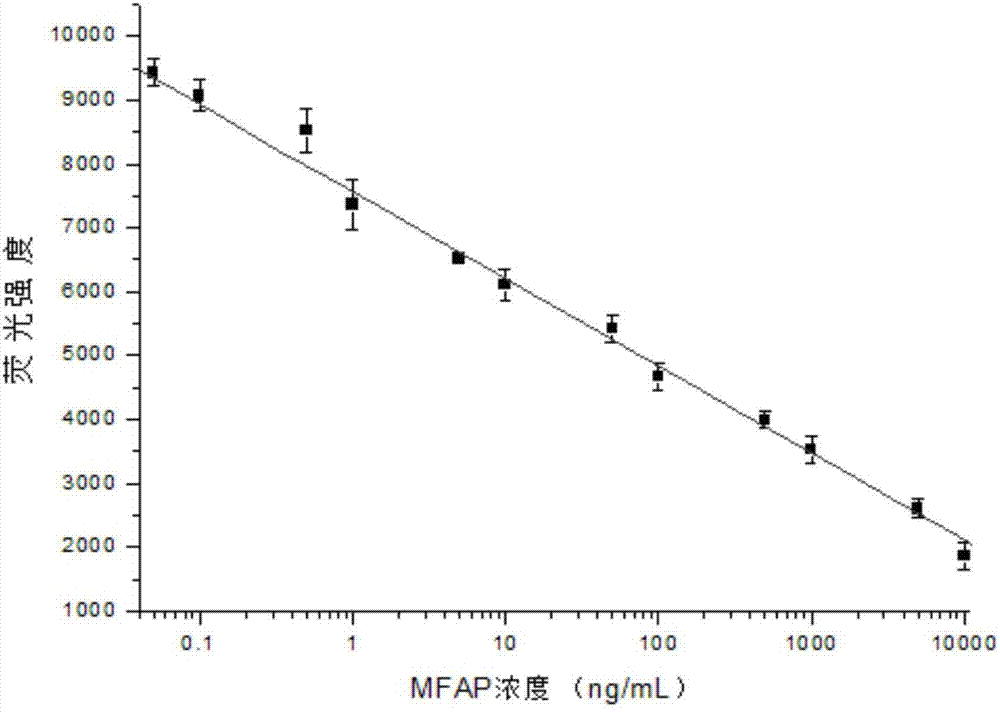Method for quantitatively detecting PSI-OAm-NAPI amphiphilic polymer nano-drug carriers based on trace fluorescence immunoassay
A nano-drug carrier and quantitative detection technology, which is applied in fluorescence/phosphorescence, measuring devices, and material analysis through optical means, can solve problems such as low sensitivity, reagent toxicity, and too strict requirements on the size of nanoparticles, and achieve detection costs. Low, high sensitivity, specific effect
- Summary
- Abstract
- Description
- Claims
- Application Information
AI Technical Summary
Problems solved by technology
Method used
Image
Examples
Embodiment 1
[0062] A method for quantitatively detecting PSI-OAm-NAPI amphiphilic polymeric nanometer drug carriers based on trace fluorescence immunoassay, said method comprising the following steps:
[0063] a, hydrolyzing PSI-OAm-NAPI to obtain a hydrolyzed MFAP solution;
[0064] Take 32mL of N,N-dimethylformamide and heat it to 60°C, then add 1.6g of polysuccinimide (PSI) and 1.63mL of oleylamine (OAm), react for 10min and add 0.83mL of N-(3-aminopropyl Base) imidazole (NAPI), and raise the temperature to 100°C for 5 hours, then cool to room temperature, add 160mL of methanol to make it evenly precipitate under magnetic stirring, take the precipitate and dry it after centrifugation, and then PSI-OAm-NAPI can be prepared (MFAP);
[0065] Dissolve 60 mg of MFAP nanoparticles and 0.6 mg of (MPEG-PLGA) in 1 mL of chloroform solution. After dissolving, add the above solution to 10 mL of sodium hydroxide solution with a concentration of 0.006 mg / mL, ultrasonic for 5 min, The power is abo...
PUM
| Property | Measurement | Unit |
|---|---|---|
| linear range | aaaaa | aaaaa |
| concentration | aaaaa | aaaaa |
Abstract
Description
Claims
Application Information
 Login to View More
Login to View More - R&D
- Intellectual Property
- Life Sciences
- Materials
- Tech Scout
- Unparalleled Data Quality
- Higher Quality Content
- 60% Fewer Hallucinations
Browse by: Latest US Patents, China's latest patents, Technical Efficacy Thesaurus, Application Domain, Technology Topic, Popular Technical Reports.
© 2025 PatSnap. All rights reserved.Legal|Privacy policy|Modern Slavery Act Transparency Statement|Sitemap|About US| Contact US: help@patsnap.com

